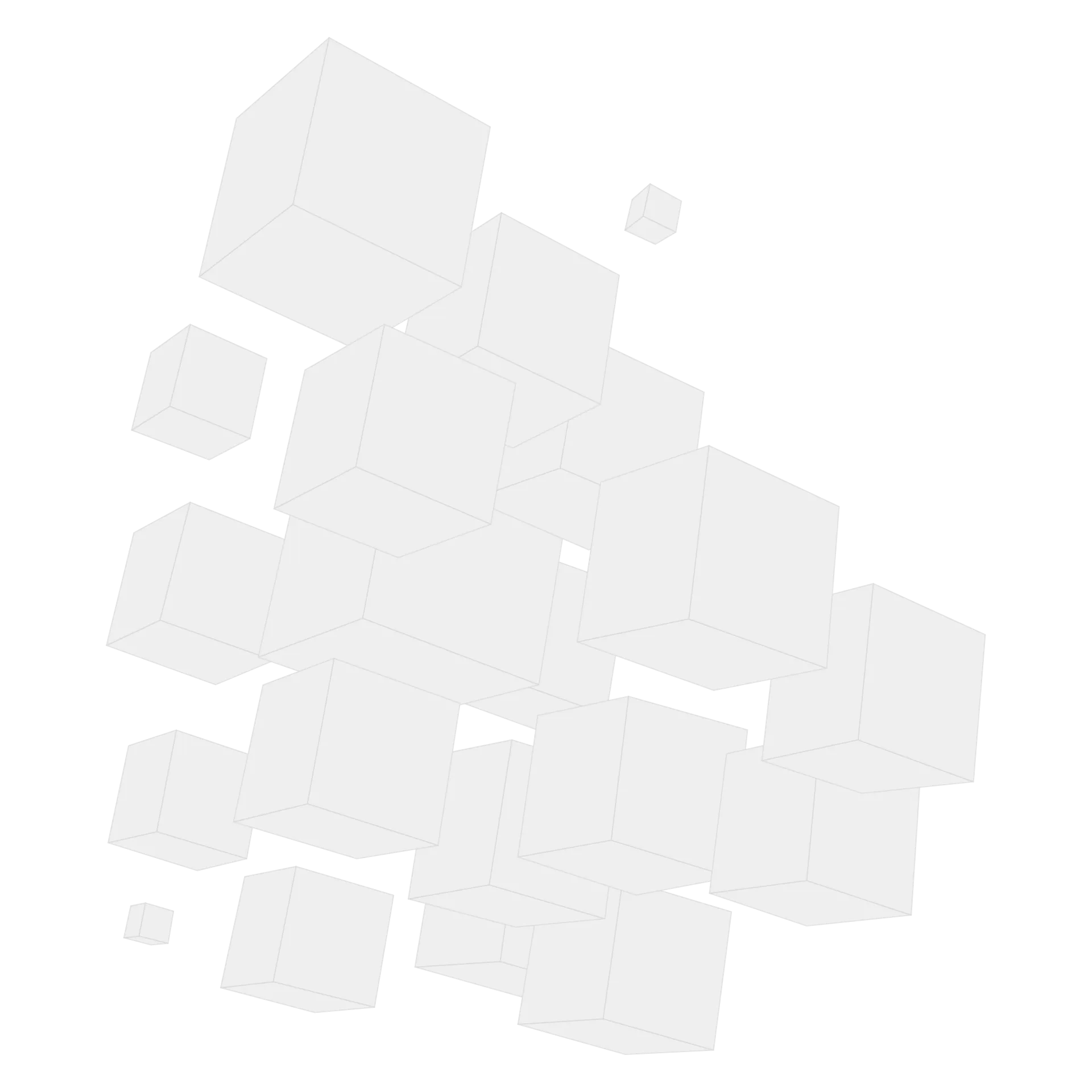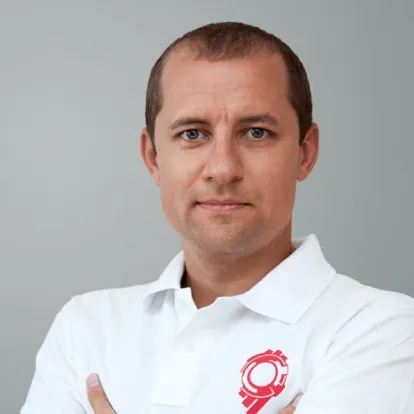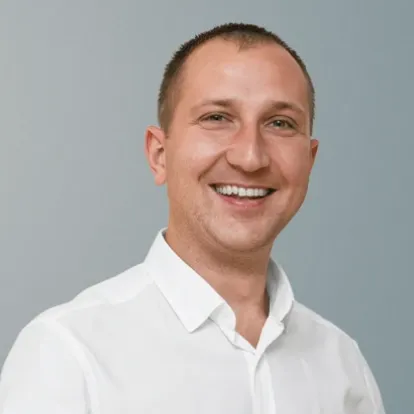Hospital Inventory Management System


New technologies and sophisticated software solutions to store and track supplies help medical organizations improve performance, minimize errors, and cut operating costs.
Due to the benefits hospital inventory management systems deliver to medical organizations, hospitals widely adopt them. The compound annual growth rate (CAGR) of the healthcare inventory management market in 2023 has reached 7.9% and is expected to grow steadily.
What Is Hospital Inventory Management?
Inventory management in hospitals describes the process of tracking medical supplies and materials at all stages, including purchasing, delivery, usage, storage, and utilization in medical facilities.
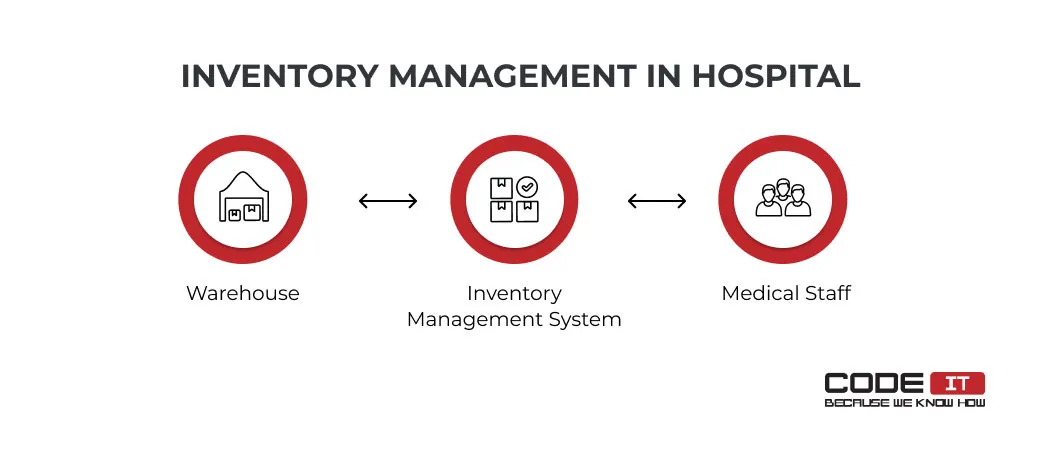
With the help of healthcare inventory management systems, medical staff can check the quality of in-stock items, their statuses, location, and other parameters using desktop, web, or mobile apps.
Adopting medical supply data management helps hospitals avoid shortages or overstocking of medical supplies and run proactive equipment and instrument protection. Also, it helps cut costs by increasing productivity, preventing theft, and decreasing the wastage rate.
Healthcare inventory management systems help medical staff to do the following.
- Track in-stock goods
- Manage goods and medications online
- Forecast demand for medications
- Receive detailed reports
- Track items travel in real time
- Receive notifications on supplies to re-order
The benefits of digital inventory management in healthcare are:
- Control over in-stock inventory
- Demand planning & reporting
- Inventory optimization in healthcare
- Reduced wastage and loss rates
- Compliance with regulatory requirements
Get tailor-made system for your hospital

Business First
Code Next
Let’s talk
Hospital Inventory Management Best Practices
Systems for inventory management in healthcare are applied to solve a lot of various problems. They help improve performance, enhance inventory visibility, and cut operational costs.

Let’s discover how hospital inventory management systems work in the real world by exploring the best practices in more detail below.
1. Optimize Inventory Management
The implementation of a digital solution for hospital management inventory helps clearly understand what inventory is in-stock, discover its properties and location, and submit requests remotely using a desktop, mobile, or web application.
A centralized database of inventory items helps avoid stockouts and overstocks by re-ordering the minimum number of goods and medications required to run all operations in a medical facility seamlessly.
Also, using inventory management in hospitals helps optimize communication between departments. The medical staff must submit a request and track its fulfillment progress to receive certain items.
2. Reduce the Wastage of Medications
The improper storage, usage, and arrangement of medications in a warehouse can increase the wastage rate.
With a system that helps manage inventory for hospitals, medical staff can monitor the expiry date of pharmaceuticals. Also, they can apply the first-in-last-out approach to reduce the number of expired medicines.
A medical inventory management system can provide information about the required storage conditions for every item.
3. Add Real-Time Visibility and Transparency
Medical workers can update and access information about every inventory item in real time. They can track the progress of request fulfillment. Also, they can check inventory items’ location and travel history in live time.
Real-time visibility and transparency enhance strategic planning and eliminate the need for workers to contact other departments for updates on their requests.
4. Forecast Demand and Spot Patterns
An inventory management system can collect much data on the flow of goods and medications in a medical institution. Using mathematical methods for time series forecasting or machine learning models, hospitals can accurately predict the demand for new items to replenish the optimal number of goods and medicines.
Besides, machine learning can detect patterns and unusual activity to prevent human error, improper usage of medical resources, or fraud.
Benefit from tailore-made IMS
5. Control Items Access and Travel
Managers in a hospital organization can enable complete inventory control in a hospital through a centralized hospital stock management.
They can check pending and fulfilled requests, get detailed reports, and review in-house stocks. Also, they can assign roles and permissions to users to limit access to inventory items or data for certain users.
6. Automate Manual Activities
Automated inventory management in healthcare helps improve performance by eliminating the number of tasks that should be tackled manually.
For instance, an automated system can track in-stock inventory and send notifications to responsible users when it reaches the minimal level. Feature-rich systems can automatically place inventory replenishment orders.
Types Of Hospital Inventory Management
Hospital inventory management systems come in various types to address the complex needs of healthcare facilities. The foremost types of IMS are as follows:
1. Manual
The periodic inventory system type is described by manual updating data and physical counts. Workers usually use spreadsheets to track inventory levels. The method is simple and easy to implement. However, manual inventory counting leads to inefficient inventory management, information update delays, and possible human error.
2. Perpetual
The perpetual inventory system type involves the usage of digital systems for automated item tracking. The usage of RFID tags and barcode readers eliminates the need for manual data entry.
Automated processes help reduce the chance of error and enable real-time data access. Consequently, healthcare providers can gain comprehensive visibility of in-stock items so that they can timely replenish medical supplies.
3. Vendor-Managed
Suppliers need to have equitable access to the real-time inventory data of a healthcare provider to enable the vendor-managed approach. They track the inventory levels, expiry dates, and deliver new items automatically to ensure a healthcare provider always has the required amount of supplies to provide patient care. It helps reduce administrative burden as inventory tracking and replenishment is delegated to a third-party company.
Advanced Technologies For Hospital Inventory Management System
Top-tier technologies help take a hospital IMS to a new level. The top tech advancements incorporated into the hospital inventory management software are as follows.

Artificial Intelligence
The usage of AI algorithms helps analyze large amounts of historical inventory data to identify trend changes or seasonal demand spikes/falls. Moreover, Artificial Intelligence is capable of detecting hidden patterns for providing accurate inventory data analytics in healthcare.
Blockchain
The blockchain technology ensures top tier data security of the data used and shared by inventory management systems. The decentralized approach helps prevent fraud, track the origin and movement of medical supplies, and ensure contract compliance with regulatory requirements.
Internet of Things (IoT)
The usage of interconnected smart devices helps enable full medical inventory visibility. For example, the radiofrequency identification (RFID) in healthcare inventory helps trace the movement of items across different facilities in real time. Also, IoT devices help meticulously monitor environmental conditions and adjust the HVAC system settings automatically to maintain the optimal temperature and humidity in a warehouse.
Cloud Computing
The technology promotes the creation of scalable and secure infrastructure for storing and processing inventory data. A cloud-based server can be easily accessed from any location via the Internet which is beneficial for large healthcare networks with multiple facilities. The storage space and computing power can be easily adjusted to meet the changing needs of a healthcare facility.
Hospital Inventory Management System Implementation Considerations
The implementation of custom healthcare inventory management processes requires you to conduct obligatory preparation activities. The foremost ones that help smoothly integrate and launch an IMS.
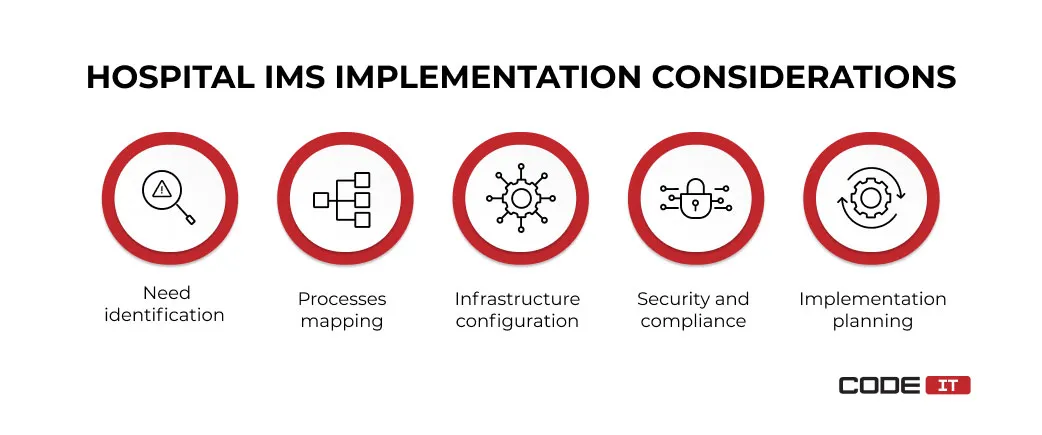
1. Need Identification
For starters, it’s required to understand the objectives of hospital inventory management system implementation clearly. Gather stakeholders and clinical staff to define the real needs and prioritize them.
2. Processes Mapping
Map out the existing workflows and define how they can be improved with custom healthcare inventory management. You need to identify the sources of inventory data, how it should be processed, and what information/functionality needs to be delivered to defined roles.
3. Infrastructure Configuration
Assess the needs of your hospital inventory management software, stakeholder needs, and regulatory requirements to configure an optimal infrastructure. Ensure the existing hospital’s hardware and network can support the new IMS. Otherwise, you need to adjust the existing or configure a new on-premise/cloud server.
4. Security and Compliance
Identify sensitive data that needs to be protected with the highest security measures such as encryption, access controls, etc. Also, ensure the system complies with relevant regulations like HIPAA and FDA.
5. Implementation Planning
Create a detailed timeline for implementing a new hospital inventory management system and assign responsible roles. Set milestones with a definition of done for each to meticulously control the rollout and avoid complete system shutdown.
Read also
Architecture Of Healthcare Inventory Management System
Medical supplies management can be adopted by establishing various technologies to facilitate and automate inventory and medical supplies tracking.
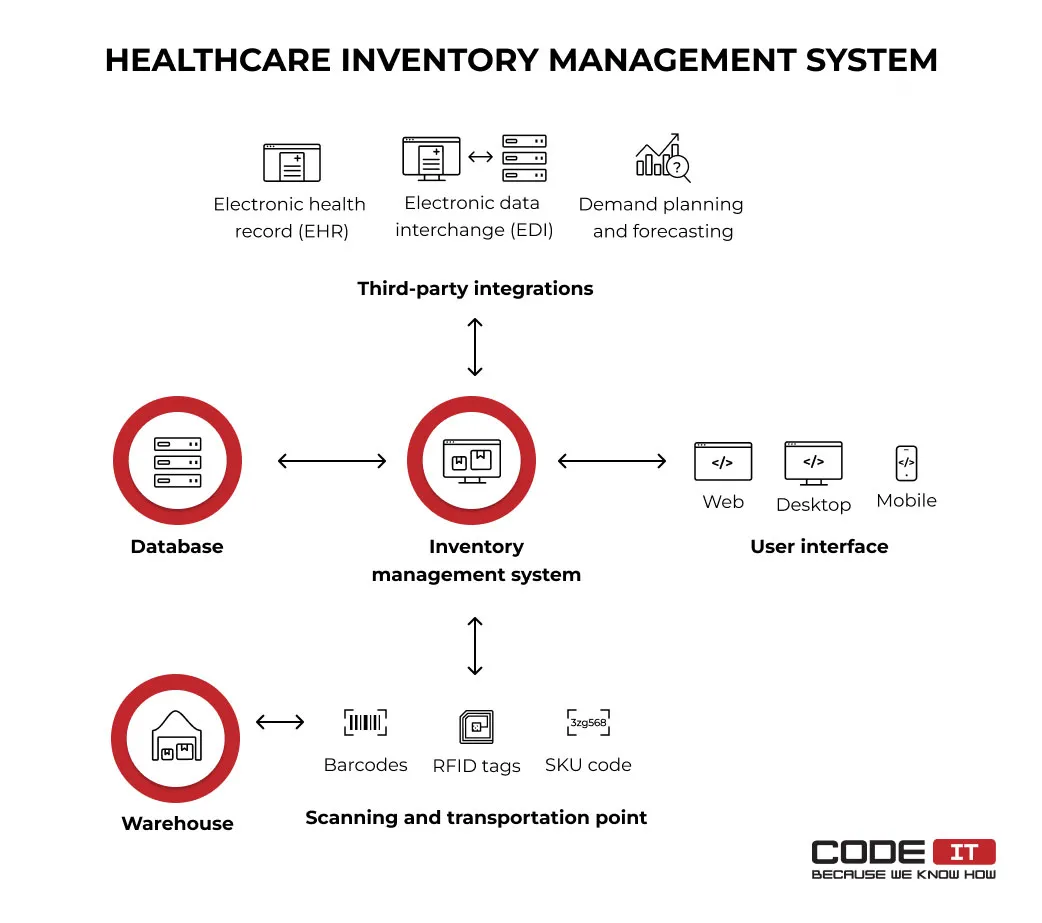
Systems that help manage inventory for hospitals imply five major components.
- Database — The core of an inventory management system that foresees the opportunity to store and share data about in-stock inventory and medications.
- User interface — Desktop-, web-, or mobile-based applications that medical staff use to submit orders and track the progress of their fulfillment.
- Backend functionality — Software that runs a hospital inventory management system. Also, it offers the ability to process data, generate reports, send notifications, etc.
- Barcode or RFID scanning — Hardware tools and software to generate, print, and scan barcodes or RFID tags to identify goods in a warehouse.
- Third-party integrations — External software connected to medical inventory management in a hospital via API or HTTPS requests to fetch and send data to different systems seamlessly.
A system for medical logistics management can be installed on cloud-based or on-premises servers.
Medical Inventory Management Features
The core functionality of a system for medical equipment management is to provide information about in-stock goods and medications and the opportunity to submit requests.

The seven core features of a clinic inventory management system are as follows.
1. Inventory tracking
It is the foremost feature that grants medical staff access to a database with information about in-stock, requested, and out-of-stock goods and medications. The database may imply records about items in a warehouse, including:
- name
- count
- barcodes
- expiration date
- SKU code
- price
- adverse effects
Application example: A hospital uses a single database comprising information about all medical supplies and medications. Authorized hospital workers can quickly check the system to see if certain items are available. Moreover, they can check additional details such as its location, quantity, expiration date, etc.
2. Inventory and medication management
With the help of a user-friendly application, medical staff can update data in a heathcare inventory management system, submit requests, or run automated order placing. For instance, they can request the delivery of certain materials or medicine. The request can contain information about goods that should be delivered, the time and location of delivery, and a recipient’s name.
Application example: A doctor submits requests for supplies, specifying the quantity of items, preferred delivery date, and delivery location. The request fulfillment progress can be tracked in live time, enabling seamless hospital supply chain management. The doctor receives a message if any delays occur.
3. Planning and forecasting
The implication of data analysis algorithms or the use of third-party services connected to a hospital management system enables medical staff to forecast the demand for medical materials and drugs.
Data-driven planning and historical usage data analysis help improve goods and medication management. Also, medical organizations can opt for the required number of materials or drugs to satisfy high demands that may occur regularly.
Application example: A data analysis tool fetches and analyzes the required inventory data automatically. The tool processes large amounts of historical data to predict high-demand periods and trend changes. It automatically composes reports and visualizes analysis results.
Read also
4. History and reporting
A system used for medical equipment utilization can analyze data and provide detailed reports on the use of goods, materials, and medications. Also, users can access a database using an application to discover the travel history of a selected inventory item and expense monitoring reports.
Application example: A healthcare worker configures a reporting tool to get custom medical supplies and medication reports daily. Different roles can get customized reports to track the most crucial metrics and goods.
5. Real-time visibility
Real-time updates on inventory items and notification systems help medical staff monitor the fulfillment progress of their requests and discover the location of items that should be delivered.
Application example: Medical staff can monitor the status of their requests and the location of items in live time. Moreover, a real-time monitoring system can instantly estimate order fulfillment time.
6. Notifications
User applications that enable access to a hospital inventory management system can deliver notifications to keep medical staff alerted about the following events.
- Fulfilled requests
- Status updates on inventory items
- Low inventory
- Expired items
- Unusual trends
The primary aim of this feature is to alert medical staff about critical events or problems that should be tackled immediately.
Application example: A doctor receives a push notification once an order is fulfilled. Moreover, medical staff gets alerted when the inventory of a vital medication is low or when an item is about to expire.
7. Integrations
The functionality of a hospital asset management system can be enhanced by adding third-party services using APIs.
The top integrations that can be connected to a medical inventory management system are as follows.
- Electronic health records (EHRs). It is a dedicated database that stores digitized information about patients, diagnoses, prescriptions, lab reports, etc. EHRs help improve the quality of services offered by medical institutions.
- Electronic data interchange (EDI). It is a service that enables healthcare organizations to exchange data by following specific rules and regulations. Data is converted to specific formats and transformed automatically before being transmitted from one organization to another and vice versa.
- Demand forecasting system. It is a third-party system that foresees the opportunity to analyze collected data using pre-built algorithms or pre-trained machine learning (ML) models. For instance, the implementation of modern technologies foresees the opportunity to accurately predict demand for goods and medications and spot unusual patterns.
The number of features that inventory management systems can imply isn’t limited. You can request software engineers to create any functionality when developing new healthcare inventory software solutions from scratch.
Application example: An IMS can seamlessly perform order synchronization with a supplier, providing real-time data on inventory levels. The supplier tracks the data and automatically delivers new items when stock levels go low.
Feature-rich IMS for your hospital with CodeIT

Business First
Code Next
Let’s talk
Challenges Solved With Healthcare Inventory Management
Hospitals and medical organizations face many challenges related to ordering, storing, and distributing goods and medications.
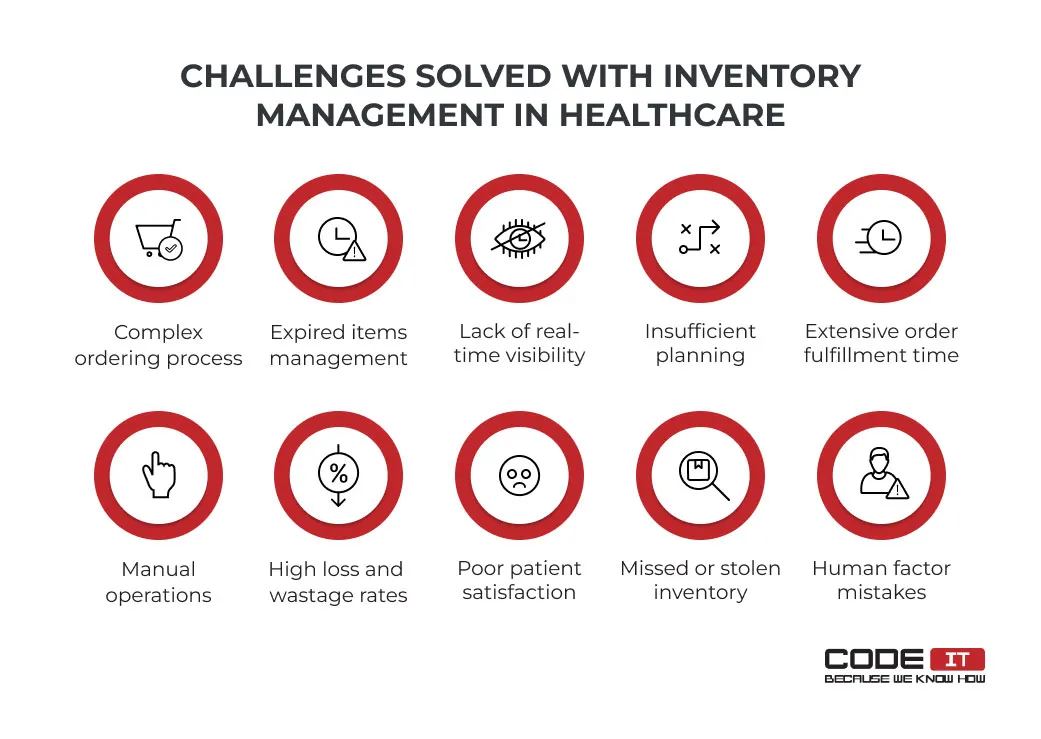
Established inventory management in hospitals helps avoid most issues, including the following.
- Complex ordering process. Usually, medical staff should communicate with many other departments to submit goods or medication orders.
- Time- and environment-sensitive materials management. Many medications have certain storage and transportation conditions that are obligatory to meet, expesially in case of emergencies for timely order fulfillment.
- Lack of real-time visibility. The medical staff needs to get real-time updates on requested items to improve planning and customer experience.
- Insufficient planning. Poor inventory forecasting for healthcare based on the assumptions of medical staff can lead to overstocking or lack of medical equipment in stock.
- Extensive order fulfillment time. Ineffective stock management in hospitals and many manual operations lead to extensive order fulfillment.
- A large number of manual operations. A lot of the labor force is required to fill in documents, update data on products, process requests, communicate with other departments, etc.
- High wastage rates. Due to insufficient planning, providers may have a lot of expired medical items. Also, irrelevant storage life and transportation conditions can change chemical composition.
- Poor patient satisfaction. Extensive order fulfillment, poor medical staff performance, complicated supply chains can decrease customer satisfaction.
- Missed or stolen inventory. Lack of visibility on inventory items increases the pharmaceutical loss rate because of misplacement, removal, expiring, etc.
- Human factor mistakes. The labor force caused errors in spreadsheets and other inventory management mistakes due to human factors.
Benefits Of Healthcare IMS
The implementation of inventory management systems help healthcare organizations to gain full visibility of their in-stock items. Digital solutions help enable automated procedures and improve efficiency.
1. Control Over In-Stock Inventory
Access to all the inventory information enables healthcare professionals to easily track medical supplies. They can promptly check the number of in-stock items, track the location of each item, and enable comprehensive inventory categorization.
The complete medical asset tracking helps understand when stock levels are low and what items need to be replenished. The centralized access to inventory data, using cloud-based inventory management systems helps prevent duplication of orders. Also, it simplifies item management across multiple locations as data is exchanged between various systems in live time.
2. Demand Planning & Reporting
The usage of an inventory management system helps gather all the information and analyze it. Hence, healthcare providers can implement custom dashboard to access information that is updated in real time. Each user can configure custom dashboards to quickly access the most vital information. Moreover, custom real-time tracking tools can automatically fetch data from the database and compose reports.
The deep data analysis using advanced technologies like artificial intelligence helps predict future demand for effective inventory replenishment planning. This approach helps hospitals adjust inventory levels according to seasonal demands or upcoming procedures. Data-baked insights help avoid stockouts and optimize inventory management costs.
3. Inventory Optimization In Healthcare
A digital solution and comprehensive inventory data overview helps understand workflows and detect bottlenecks that need to be addressed. The optimization of processes and elimination of bottlenecks helps reduce labour pay, minimize wastage, and ensure the right items are always available. Furthermore, optimized medical supply management helps enhance patient care performance.
4. Reduced Wastage And Loss Rates
The ability to track expiration dates, usage rates, and supply movement helps utilize medical supplies effectively. It helps effectively utilize perishable products before they expire. It promotes cost savings and reduced medical item wastage.
Additionally, the meticulous tracking of medical items with top-tier data accuracy helps reduce human error, track supplies across departments, identify excess or soon-to-expire items, and reallocate them before they become unusable.
5. Compliance With Regulatory Requirements
A hospital IMS ensures regulatory compliance by keeping accurate and up-to-date records on inventory levels, handling procedures, and expiration tracking. The digital solutions that help ensure adherence to regulatory requirements are automated supply documentation creation, reporting, and audits.
CodeIT’s Expertise
ConnectSx is an innovative solution that helps optimize inventory management in a healthcare organization. Also, it provides complete visibility of all processes for clinic managers.
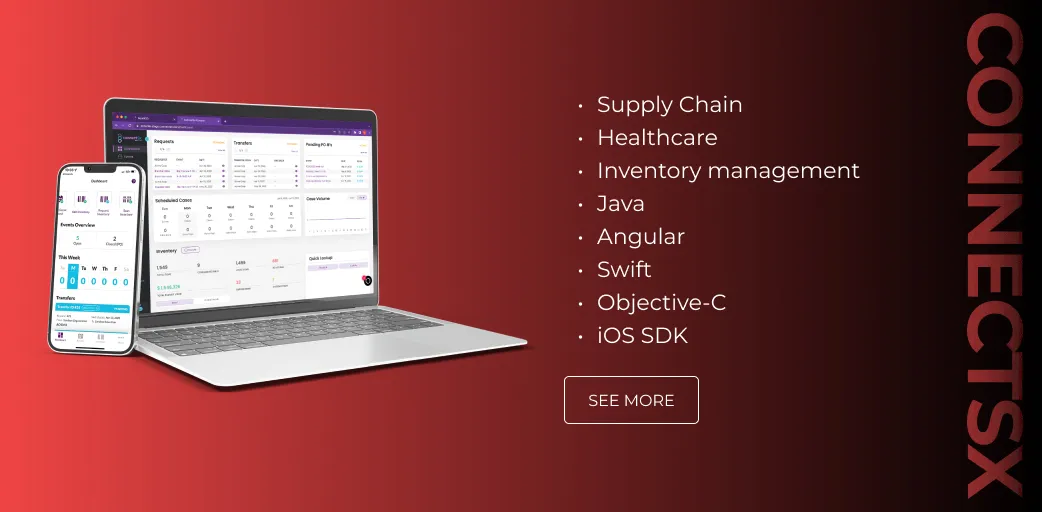
Problem
The client strived to optimize internal processes, reduce errors, and enable full visibility of the entire medical supply chain. The existing solution that was under development couldn’t help solve problems. Hence, the CodeIT team was involved in the project.
Solution
Our experts have conducted a technical audit by thoroughly analyzing the project and preparing a detailed reboot plan. We’ve rebooted the project and developed three standalone applications.
- Inventory management web app
- Inventory management mobile app
- UDI scanning mobile app
The developed applications enable the opportunity for hospitals to:
- Manage inventory and submit transfer requests
- Track inventory movement history
- Track product expiration dates
- Collect and analyze inventory data
- Automatically submit sales forms
- Find lost items
- Scan barcodes
Case study
Final Words
A healthcare inventory management system is software that enables medical staff to manage and monitor all the goods and medications in a healthcare organization.
Users can access databases using web-, mobile-, or desktop-based applications to submit requests, check data, receive notifications, update information, etc.
The architecture of a healthcare inventory management system usually includes the following parts:
- database
- user interface
- backend functionality
- barcode technology in healthcare inventory
- third-party integrations
Systems for inventory management in hospitals help optimize performance, cut operating costs, spend resources wisely, and minimize loss and wastage rates. Also, they help automate manual operations and add transparency.
FAQ
According to various studies, roughly half of the medical institutions track their inventory manually. For instance, they may use spreadsheets. Medical staff should manually update all the information about inventory items in the spreadsheets.
The other half of medical institutions use software for inventory management for hospitals. It implies the following components:
- user-end application;
- backend application;
- database;
- scanning hardware and software;
- third-party integrations.
The use of digital solutions helps optimize and automate a lot of processes.
It is the process of tracking inventory items in a hospital, including:
- pharmaceuticals;
- equipment;
- prescriptions;
- medical supplies;
- surgical instruments;
- janitorial supplies.
Digital solutions enable hospitals to track in-stock inventory items and their travel history using web, desktop, or mobile applications.
The top hospital inventory management best practices and benefits are the following.
- Inventory management optimization
- Reduced loss and wastage of inventory items
- Real-time visibility and transparency
- Demand forecasting
- Inventory items access control
- Manual activity automation
According to the Role of Technologies in Inventory Management guide, the three types of inventory management techniques in healthcare organizations are:
- Push. Items are delivered in advance and stored in a warehouse to meet the demand.
- Pull. Items are delivered to warehouses from suppliers only when requests from customers are submitted.
- Just-in-time. A minimum number of items are stored in a warehouse. Additional requests are processed using the pull strategy.
Related services and industries
Inventory Management Software
Take inventory control, optimize your supply chain, and achieve sustainable growth.
Build your ideal
software today

